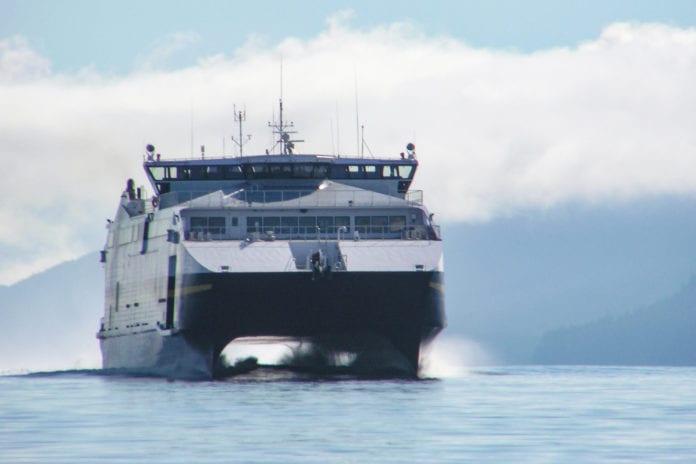State ferry management said they are working to be more responsive to community and passenger concerns, including reconsidering the use of “dynamic pricing,” where fares increase as ships fill up on popular sailings.
No one likes dynamic pricing, Katherine Keith, the Transportation Department’s change management director, told legislators last week.
The pricing structure is similar to airlines, hotels and rental cars, where bookings on popular routes and travel days can cost significantly more, especially as availability tightens closer to the travel dates.
The Alaska Marine Highway System adopted dynamic pricing in October 2019, with ticket prices for passengers, vehicles and staterooms increasing from 5% to 50% depending on the percentage of capacity already booked.
The pricing structure will remain in place this summer, Keith said, but will be reevaluated before the fall/winter 2022-2023 schedule is released.
Higher prices for popular runs were adding almost 10% to overall fare revenues, the department told lawmakers last year.
Juneau Sen. Jesse Kiehl did not dispute that higher prices generate more revenue, but told Transportation Department officials at a committee hearing last year that he would like to see fare discounts when traffic is light.
“This is dynamic price hiking,” he said of the one-way fare movement.
The fare add-ons were among the complaints reported by ferry users and other stakeholders, Keith told the Transportation Department budget subcommittee of the House Finance Committee on Feb. 8. Other concerns on the list included ferry breakdowns, the aging fleet, poor schedule predictability, limited onboard passenger services, costly labor contracts and overreliance on state funding.
“The system needs some reliability,” Ketchikan Rep. Dan Ortiz said at last week’s Southeast Conference meeting in Juneau.
Sitka Rep. Jonathan Kreiss-Tomkins was harsher in his comments at the gathering of community and chamber of commerce officials from Southeast communities. He said the ferry system is the worst it’s ever been, though he sees “causes for optimism,” including the governor’s budget proposal to add service.
After deep budget cuts imposed in the first year of the Gov. Mike Dunleavy administration in 2019, additional schedule gaps due to aging vessels and repair work, and reduced traffic during the worst of the COVID-19 pandemic, the Alaska Marine Highway System budgeted for a 20% to 30% drop in port calls in fiscal years 2020, 2021 and 2022.
Taking advantage of tens of millions of dollars from the federal infrastructure funding bill, the governor has proposed about an 8% increase in port calls for the next fiscal year over 2019 levels. Lawmakers are reviewing the governor’s budget.
That proposed boost in vessel traffic assumes the ferry system can hire more than 300 new workers and get them trained and on board before the summer busy season starts. In particular, plans to return the Columbia to service — the largest vessel in the fleet — is dependent on hiring new crew to restaff the ship, which has been held out of service since October 2019 to save money.
Even before COVID cut into passenger loads, the ferry system’s numbers were down substantially, dropping from almost 373,000 passengers on Southeast routes in 1992 to just 152,000 in 2019, with critics blaming rising fares and less convenient schedules for the steep fall in passengers and revenues to the heavily subsidized service.
Passenger, vehicle and stateroom revenues covered more than 60% of the ferry system’s operating expenses in 1992, falling to about 35% in 2019, according to data presented by the Transportation Department at last week’s House subcommittee hearing.















